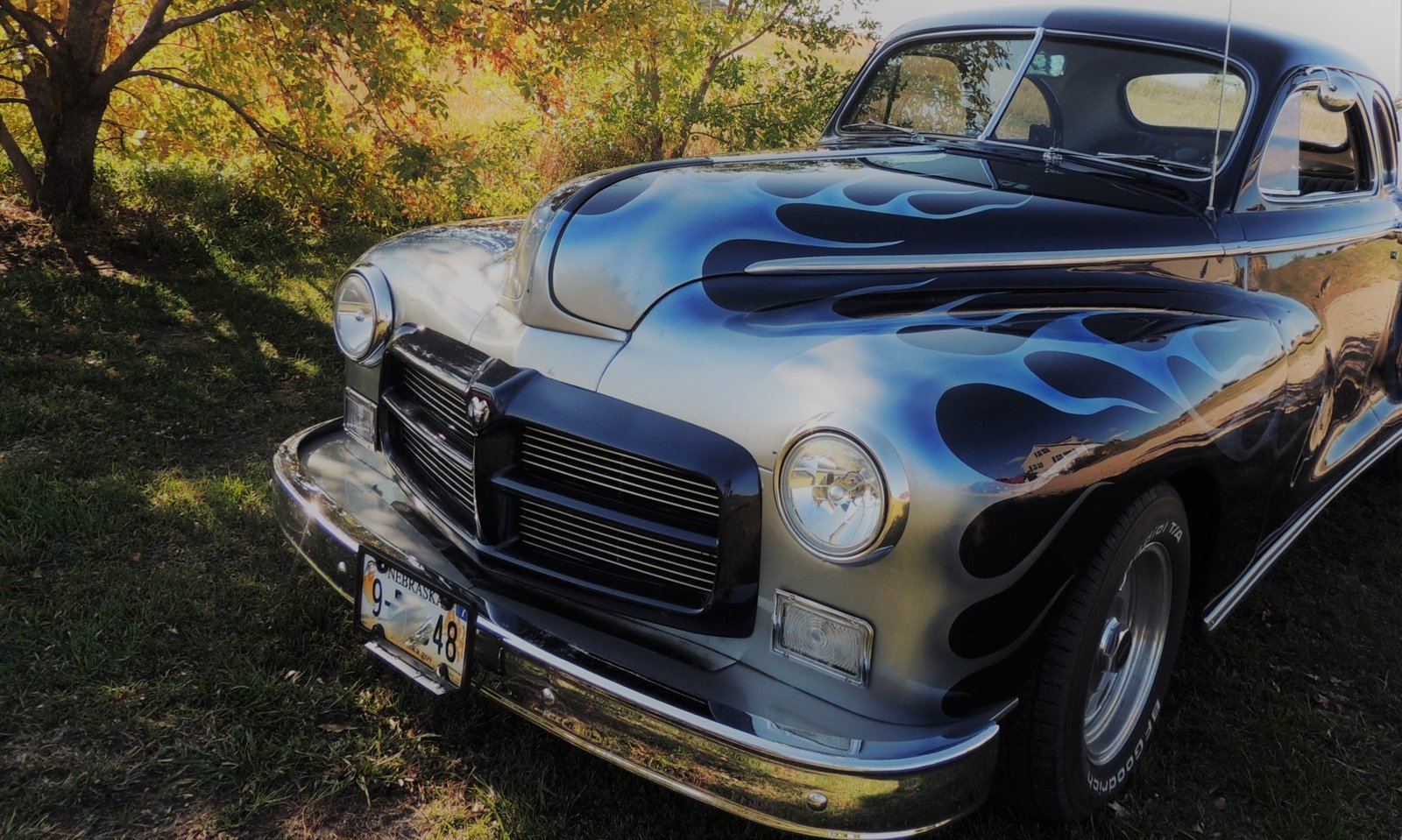
This 1930 photo shows famed heavyweight wrestler John Pesek, known as the Nebraska Tiger Man, purchasing a new car in Grand Island, Nebraska. Even though the publication was titled “Automobile Topics,” the editor committed the grievous error of failing to note the type of car being purchased. Luckily, those distinctive triangle shapes to the Tiger Man’s right make this car easily identifiable.
The triangles are actually pennon louvers, named as such because they are pennant shaped, and they graced the early 1930 models of the Chrysler Series 70 and 77.

Photo Credit: GPS 56 from New Zealand, CC BY 2.0 https://creativecommons.org/licenses/by/2.0, via Wikimedia Commons
In addition to the pennon louvers, Chrysler proudly introduced a whole slew of innovations with descriptive terms to the motoring public in 1930. One interview with Chrysler distributor Carl H. Wallerich began with Wallerich quoting the philosopher Diogenes (who was quoting Myson): “Things are not made for the sake of words, but words for things.”

Wallerich explained that when a new thing comes into existence, it demands a new label. He then proceeded to give many examples of words associated with the First World War, words like dud, barrage, tank, flying pig, camouflage, dug out, whizz bang, and zero hour, that had been previously unknown, or at least unfamiliar, but quickly became part of the popular lexicon. Similarly, Chrysler’s mechanical innovations required new terms such as “multirange gear shift,” explained this way:
“It renders control of the car far more simple, more effective and safer than ever before. Starting Range has a top speed of more than 40 miles an hour. Acceleration Range has a pick-up at all speeds up to 60. A floating Speed Range is used for driving. In addition there is a Heavy Duty Range for deep mud, and sand or steep hill-climbing. Shifting back and forth between Acceleration and Speed ranges is accomplished without clashing or grinding of gears. Reverse Range is in the conventional position.”

Another feature, “down-draft carburetion,” took its name from the fact that the gas was drawn down into the carburetor, aided by the force of gravity, rather than sucked up. The carburetor was mounted above the intake manifold instead of below it, and both a carburetor with a larger throat and larger intake passages were used, giving the engine greatly increased breathing capacity and increasing the volumetric efficiency of the engine.
“Architonic body” was used by Chrysler to describe the car that was “the essence of master craftsmanship,” and the term “chromium architraves” was borrowed from architectural phraseology to describe the molding around the windows. “Synchronized power” was used to tell the story of the new Chrysler power plant, engineered as a single unit, not a group of connected parts but one smoothly operating and carefully synchronized whole, and the parking lights were called “sconce-type” due to their similarity to a bracket candlestick attached to a wall. Finally, “paraflex spring suspension” was used to refer to springs mounted parallel to the wheels to eliminate side sway, absorb tortional strains and stresses, and control rebounds by checking the impulses and shocks. Many of these new descriptors are found in this advertisement:

Maybe the pennant-shaped louvers made the car popular with figures of the sports world, because Pesek was not the only one seen driving the new Chrysler. Pictured below is Coach Ralph Coleman, the “Silver Fox” who led the Oregon State University baseball team for 35 years.

Interestingly, the Nebraska Tiger Man, John Pesek, was also known for raising greyhounds, which is why dogs of that breed are included in this sculpture of Pesek located in Ravenna, Nebraska.

Considering his penchant for greyhounds, one does have to wonder if Pesek switched his automobile allegiance to Ford a couple of years down the road.
















